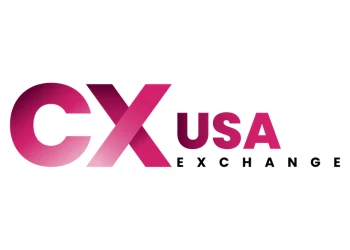Shein prepares for London IPO with investor roadshow
While an IPO can signal cost-cutting over customer centricity, going public can sometimes lead to a better customer experience
Add bookmark
Fast fashion retailer Shein is hoping to list on the London Stock Exchange (LSE) in early 2025 and in preparation, is planning an investor roadshow.
The Singapore-based online fashion site is valued at US$66bn and in 2023 recorded profits of $2bn, more than double the previous year.
Shein planned its initial public offering (IPO) for the New York Stock Exchange (NYSE), however, it faced regulatory scrutiny from the US around its supply chain, specifically the source of cotton used in some of its products, its labor policies and ties with China.
In June 2024, Shein instead turned attention to the LSE and the UK government has said it is delegating the necessary regulatory approval to the Financial Conduct Authority (FCA). At the time, the UK business secretary, Jonathan Reynolds, reassured investors the UK will enforce “the highest standards”.
In mid-December 2024, Reuters reported that Shein is considering offering less than 10 percent of the company on the LSE. This would value the IPO at $6.6 billion, which still dwarfs Puig's $2.9 billion flotation earlier in 2024, the biggest European IPO of the year.
To do this, Shein must ask UK regulators to refrain from applying rules that require a minimum of 10 percent of a company to be offered in an IPO. The 10 percent rule was introduced in 2021 and, if permission is granted, Shein would be the first company to offer less than the minimum.
Regulatory approval for Shein's listing is yet to be granted as the FCA continues its mandatory investigations into the retailer's supply chain and labor practices. A January 2025 hearing on workers right before the UK's cross-party Business and Trade Committee saw Shein accused of "wilful ignorance" over forced labor in its supply chain, which could put the IPO at risk.
However, in anticipation of acquiring approval, Shein started to court investors in November 2024, according to news reports published by The Times.
Although no hard dates have been announced publicly, Shein’s management team was expected to start meeting with institutional investors before the end of 2024 and the IPO prospectus was being circulated “among select stakeholders”, ahead of its wider release.

Don't miss any news, updates or insider tips from CX Network by getting them delivered to your inbox. Sign up to our newsletter and join our community of experts.
What is Shein?
Present in more than 150 markets around the world and counting a workforce of more than 16,000 employees, Shein is an online fashion retailer that operates what it describes as an “on demand” business model. This sees its test the market with smaller runs of up to 200 items on new designs, which then go into mas production based on the real-time monitoring of their initial popularity across the website, app and other platforms.
As Shein puts it, “emerging trends can become products quickly”.
Shein says this approach “addresses customer preferences more accurately and efficiently” and solves the “mismatch between customer demand and merchandise supply, improving outcomes for both our supplier partners and our customers”.
Co-founder and CEO Sky Xu, says of the business model: “We’ve reimagined fashion from a supply-driven model to a demand-driven model to make the beauty of fashion more accessible to all. At the same time, we are focused on continuing to support and empower the designers, creators, suppliers and partners who are fundamental to our success.”
While Shein has its own terminology for this approach, it also fits the definition of fast fashion. This is based on micro-trends and sees products go from concept to sale incredibly quicky to allow to stock to be constantly updated.
As such, fast fashion comes under heavy scrutiny for encouraging overconsumption and driving pollution. It has been linked to low-paid labor and sub-quality products that in some cases have been proven to use harmful dyes and chemicals.
Although Shein says it tests the market before moving to mass production as a way to eliminate waste, it is operating this cycle for hundreds of products a week in line with dozens of emerging micro-trends, which rapidly make way for another round of designs. According to Reuters, Shein is the world’s largest fast fashion retailer with a global market share of 18 percent.
As consumers demand more sustainable fashion retail, circular economy principles and recommerce are seeing a surge in popularity.
Why do fashion retailers list on stock markets?
The parent companies of many major fashion brands have pursued public listings on stock markets around the world.
There are many reasons for this but, overall, it can drastically increase the value of the company beyond sales revenue and raises money to re-invest in the company. Yet this is a double-edged sword; PR scandals, falling short of financial targets and even controversy surrounding executives can all impact stock prices and therefore, company value.
For example, earlier this week LVMH – the fashion brand with the world’s highest market cap at the time of writing – released its financial results, which showed a slowdown in sales of luxury goods. In response, its share price dropped 4.7 percent with analysts concluding the luxury customer is spending less.
As of November 21, 2024, the top 10 clothing companies on all stock markets around the world by market capitalization, were:

As the graphic demonstrates, the biggest fast fashion brand on the stock market at present is Inditex, which owns Zara, Oysho, Pull & Bear, Massimo Dutti and Stradivarius/ Bershka, among others. As demonstrated above, Inditex is followed by Ross Stores.
At the other end of the spectrum, Fast Retailing’s UNIQLO’s has repeatedly distanced itself from the “fast fashion” definition by avoiding micro-trends and instead focusing on long-lasting, quality clothing with “timeless design”.
Beyond this top 10, many fast fashion brands are listed on stock markets around the world and their quick market turnaround does deliver profits for shareholders. In London this includes Asos and Boohoo. However, due to the environmental impact of fast fashion, some fund managers are now stepping away from these stocks.
What does an IPO mean for Shein’s customer experience?
In short, a public listing brings many more stakeholders to the table, which heightens the focus on financial performance and often overrides considerations around employees, culture and customer centricity.
A closer focus on profit also comes with a closer eye on overheads and this could place further pressure on the prices Shein pays to its employees and suppliers.
In preparation for its planned IPO, Klarna embarked on a cost reduction drive earlier this year, announcing it would not replace workers who resign and instead ramp up its use of automation and artificial intelligence (AI).
This example demonstrates how a stock market listing can impact CX as well as customer culture, as the focus on share prices fundamentally changes how the company operates from a human resource and customer care perspective.
Markets.com says the biggest cultural shifts occur around priorities, values and operational strategies. “These changes can redefine the very ethos of the organization, impacting everything from employee morale to decision-making processes.”
Other changes post-IPO may include: rapid expansion of the workforce, moving into new markets, acquiring new businesses or competitors and new decision-making processes, which may favor stability over innovation.
How a customer-first culture can please shareholders
That said, customer retention can play a huge role in the success of a public company. According to business consultant Larry Alton, writing for Customerthink.com, “customer metrics are the most authoritative way to assess the value of your business”.
This is because metrics around customer acquisition, spending and churn all indicate how profitable, and therefore how valuable, a company is. The longer customers are retained, the higher an organization’s long-term profit potential increases.
One strong example of this is Moonpig, which opened its 2024 annual report with the statement: “At heart we are a technology platform, but our customers know us as the leading online destination for greeting cards, gifts and flowers”.
Its full year report included many customer-focused figures including the number of customer occasion reminders in its database, which increased six million year-on-year, indicating the likelihood of even higher repeat business.
It also reported on its diversified customer demographics and new functionality to allow customers to place orders more frequently. According to Moonpig, this all contributed to a group revenue increase of 6.6 percent during FY24.
In the six months to November 2024, its share price grew by 54 percent.
Quick links
- Shein IPO hits another hurdle as company value slides
- Customers win car finance case in UK Court of Appeal
- New Ipsos survey confirms growing concern for digital accessibility in CX
Special Report: The Global State of CX

Tenth annual flagship report. AI has transformed CX, raising expectations with investment in AI for CX automation, machine learning, and conversational AI now a top priority. Download the Global State of CX to learn how the industry is preparing for the new AI first future.
Download Now


























